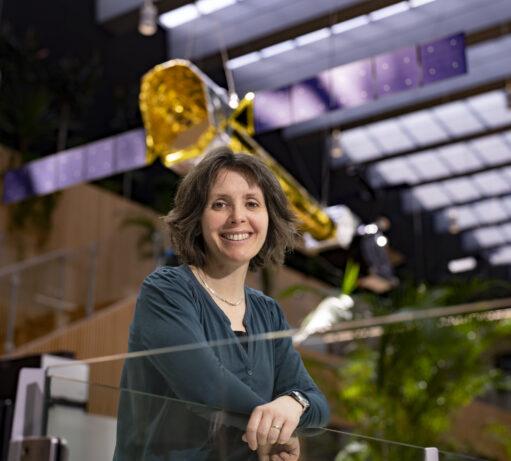Celestial bodies with a high temperature or mass density are the field of high-energy astrophysics. These include compact objects such as neutron stars or black holes, or gas clouds of millions of degrees within clusters of galaxies. They mainly emit high-energy radiation, such as X-rays and gamma rays, or gravitational waves. We capture these signals with space telescopes and use them to learn what happens under the extreme conditions inside these celestial bodies and how they affect their environment.
Converting those signals into useful information is not so easy yet. For example, we create models on how X-rays arise in hot gas clouds and which gravitational waves match which black holes. Spectroscopy and timing are important tools here, where we measure not only the amount of radiation, but also how it varies through time and what energy the individual light particles have. This is how we get the best scientific results from our instruments and improve the design of new instruments.
The Cosmic Web
Our galaxy is part of a vast web of other galaxies, dark matter and hot gas that encompasses the entire visible universe. At the nodes of that cosmic web, we find groups of hundreds of galaxies that we call clusters. Within them, galaxies are embedded in hot gas of millions of degrees emitting X-rays. Those clusters are connected by filaments of tenuous gas, between which there are smaller groups of galaxies, such as the Local Group that our Milky Way is part of.
One of the important questions in high-energy astrophysics is how these structures have formed since the birth of the universe. Clusters seem to consist largely of dark matter-a form of matter that does not interact with the ‘normal’ matter that we and everything we know is made up of. This dark matter seems to attract galaxies and determine the structure of the hot gas within a cluster.
In addition, supermassive black holes at the centre of a cluster also affect the hot gas clouds. The black hole attracts a large part of the gas and then ejects it again at high speed, warming the gas and causing vortices within the gas clouds. This feedback is interesting, as we see that the size of the black hole correlates with that of galaxies. By studying these processes, we try to understand how this comes about and why galaxies and clusters look the way they do.
Furthermore, the hot cluster gas also gives insight into how key elements such as oxygen and iron were created. Over billions of years, exploding stars have added new elements to the gas. Because clusters are at different distances from us, we are always looking at different epochs in the universe. So we see how this enrichment takes place over time. By measuring the energy of individual X-ray particles, we build up a spectrum of the gas, from which we determine its temperature, composition and velocities. We do this with the space telescopes XMM-Newton, Chandra, XRISM, and in the future, NewAthena.
Black Holes and Neutron Stars
If neutron stars and black holes do not attract matter, we can also study other properties. Many neutron stars rotate rapidly on their axis and therefore have a strong magnetic field. Charged particles are accelerated in the magnetic field and then emit a beam of X-rays and gamma rays. The rapid rotation turns the neutron star into a lighthouse that periodically sends out a pulse. By looking very closely at the arrival times of the pulses, we can deduce what the magnetic atmosphere looks like.
Sometimes neutron stars and black holes get close together and eventually merge. This could also happen to supermassive black holes. In the final stage before merging, the two heavy objects then orbit each other so fast that they vibrate space itself. With detectors underground, we can already measure these so-called gravitational waves from orbiting neutron stars and light black holes. In the future, the LISA space mission will also allow us to measure gravitational waves from double supermassive black holes.
Dust in Our Galaxy
When neutron stars and black holes snatch material from an accompanying star, they emit bright X-ray signals. These shine right through the clouds of gas and dust between the stars in our galaxy. The dust particles partially absorb the X-rays, leaving unique patterns in the spectrum of the original signal. In addition to infrared signals, this gives another way to measure which molecules are found in space.
Data analysis
An important tool for analysing X-ray spectra is the SPEX software we are developing at SRON. This package contains models that describe which spectrum a gas emits under certain conditions. By comparing observed spectra with the models, we determine the properties of a space cloud. We also use the software to calculate what a new instrument might yield.





